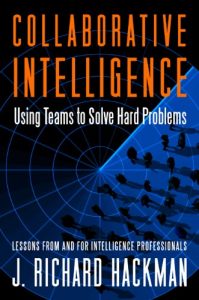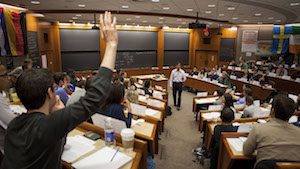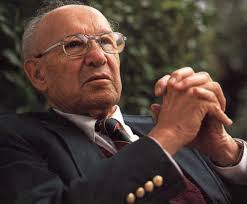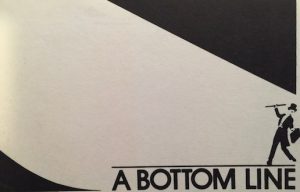 Collaborative Intelligence: Using Teams to Solve Hard Problems. J. Richard Hackman.
Collaborative Intelligence: Using Teams to Solve Hard Problems. J. Richard Hackman.
I first met Richard Hackman in my doctoral studies. I was taking his course on the social psychology of organizations and the twenty five page reading list was an early hint that I might not have fully understood what I had signed up for. The enrollment was small so there was no place to hide. I did survive the experience and learned much of what was on that reading list. Better still, Hackman was THE authority on creating and leading teams.
This book grew out of his work with the U.S. Intelligence community post 9/11. That work flowed out of the belief that “what is most needed these days to generate the insights that policymakers demand are interdisciplinary teams that cross traditional institutional boundaries.†That is a need that is central to the mission of any knowledge intensive organization operating in today’s environment. This book is Hackman’s distillation of decades of work with teams of all forms and missions.
The essential message of the book is that the biggest payoff in quality team results comes from the work the goes into setting the team up for success at the outset. Getting the initial conditions right and crafting good performance strategies proves to be far more important than team-building, coaching, or process management along the way. Think of it as empirical support for the adage “well begun is half done.â€
The book is organized around exploring and elaborating on six enabling conditions that set a team up for ultimate success. These six conditions each get their own chapter:
1. creating a real team (rather than a team in name only),
2. specifying a compelling direction or purpose for the team,
3. putting the right number of the right people on the team,
4. specifying clear norms of conduct for team behavior,
5. providing a supportive organizational context, and
6. making competent team-focused coaching available to the team
Much of what follows is solid, but unsurprising, advice for creating and directing teams. That doesn’t make it any less valuable, particularly given how often it is ignored in practice.
There are interesting insights that are especially relevant for teams doing knowledge intensive and innovative work. For example, Hackman points out that “only rarely do teams spontaneously assess which members know what and then use that information in deciding whose ideas to rely on most heavily.†This is part of a larger problem that managers generally don’t seem to do a very good job of designing work to take advantage of what teams can bring to a problem. Managers seem to be biased toward carving tasks up in a quest for the illusion of manufacturing efficiency rather than on “ways to elicit and integrate the contributions of a diverse set of performers.â€
In an interesting parallel to Fred Brooks’s observations about the “mythical man-monthâ€, understaffing teams seems to produce extra motivation and energy, while overstaffing appears to mostly lead to problems not benefits.
Diverse, interdisciplinary, teams are assembled on the premise that pooling team members collective knowledge and expertise will produce more innovative solutions. Here is Hackman’s cautionary take on that goal:
Perhaps the greatest advantage of teamwork is that team members have diverse information and expertise that, if properly integrated, can produce something that no one member could possibly have come up with. It is ironic, therefore, that teams typically rely mainly, and sometimes exclusively, on information that is shared by everyone in the group. Information uniquely held by individual members may not even make it to the group table for review and discussion. For decision-making and analytic tasks, that can significantly compromise team performance.
This reinforces his advice that team effectiveness depends greatly on the design of team structure, membership, and performance strategies. Putting the information in the room is not sufficient; you must also explicitly design for surfacing and sharing that information.
One of the most interesting findings about effective teams comes from research that Hackman worked on with his colleague Connie Gersick. They discovered an interesting pattern in how effective teams managed their time over the course of a project. They found that
every group developed a distinctive approach toward its task immediately upon starting work, and then stayed with that approach until precisely half-way between its first meeting and its project deadline. At that point, all teams underwent a major transition that included altering member roles and behavior patterns, re-engaging with outside authority figures or clients, and exploring new strategies for proceeding with the work. Then, following that midpoint transition, teams entered a period of focused task execution that persisted until very near the project deadline, at which time a new set of issues having to do with termination processes arose and captured members’ attention.
This would seem to contradict assumptions about what constitutes best practice in project management circles. Project managers are trained and rewarded for their ability to develop an initial plan and carry it to conclusion. Few project managers are likely to prepare or submit project work plans built around the assumption that the plan will be scrapped and rewritten halfway through the effort.
The way that I reconcile this apparent contradiction is to observe that many projects are not about exploration or innovation but about executing to a well specified final result. Hackman and Gersick’s observations appear to be most relevant to teams tasked with addressing the non-routine. It suggests that project managers need to be very careful to understand and communicate the limits and relevance of mainstream project management practices when dealing with less well-defined questions. This is increasingly relevant in the turbulent environment that more and more organizations are compelled to work in today.
This is not a long book, but it is dense. There is a lot of wisdom within that is grounded in a combination of rich field experience and rigorous thinking.
 I was a big fan of Sherlock Holmes and various other fictional detectives growing up; I’m still drawn to the form when I want to relax. There’s a basic pleasure in trying to match wits with Sherlock and figure our who the killer is before the final reveal. Connecting the dots is a rewarding game but it’s a flawed strategy.
I was a big fan of Sherlock Holmes and various other fictional detectives growing up; I’m still drawn to the form when I want to relax. There’s a basic pleasure in trying to match wits with Sherlock and figure our who the killer is before the final reveal. Connecting the dots is a rewarding game but it’s a flawed strategy. Last Saturday, Charlotte and I joined the Chicago instance of the
Last Saturday, Charlotte and I joined the Chicago instance of the  I’ve lost the certificate but I was once honored by my classmates for the “best bluff when called on unprepared†in a managerial decision analysis class during my first year in business school. I’m fuzzy about what had happened the night before as were most of my classmates so some celebration had taken precedence over opening the day’s case, much less actually reading it. Anyway, it’s now 8:30 and Professor F opens by saying “Mr. McGee, could you please take the role of John Smith for today.†Professor F then proceeded to name two other victims and paired each of us with classmates who were lawyers. We were dispatched to the hallway, while Professor F briefed the rest of the class on what what going to happen next. Out in the hall, I turned to my new partner, Jay, and asked him the key question on my mind. “Who is John Smith?†Jay’s response was “you’re the CEO of Acme—keep your mouth shut and don’t do or say anything unless I tell you to.†This was advice I was qualified to handle.
I’ve lost the certificate but I was once honored by my classmates for the “best bluff when called on unprepared†in a managerial decision analysis class during my first year in business school. I’m fuzzy about what had happened the night before as were most of my classmates so some celebration had taken precedence over opening the day’s case, much less actually reading it. Anyway, it’s now 8:30 and Professor F opens by saying “Mr. McGee, could you please take the role of John Smith for today.†Professor F then proceeded to name two other victims and paired each of us with classmates who were lawyers. We were dispatched to the hallway, while Professor F briefed the rest of the class on what what going to happen next. Out in the hall, I turned to my new partner, Jay, and asked him the key question on my mind. “Who is John Smith?†Jay’s response was “you’re the CEO of Acme—keep your mouth shut and don’t do or say anything unless I tell you to.†This was advice I was qualified to handle.





